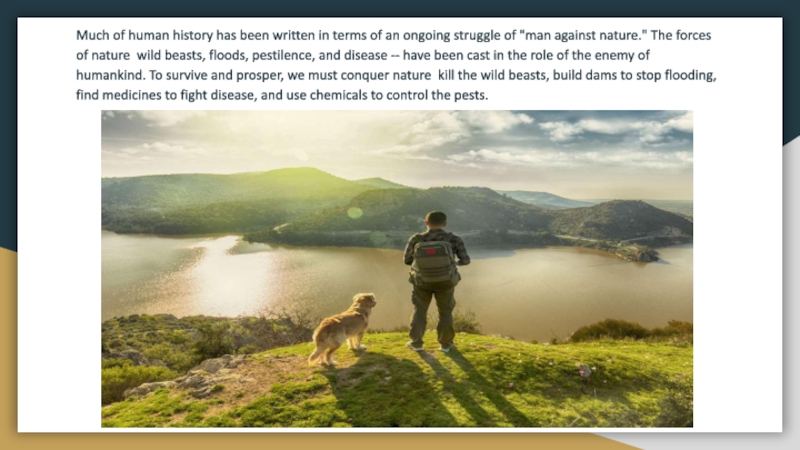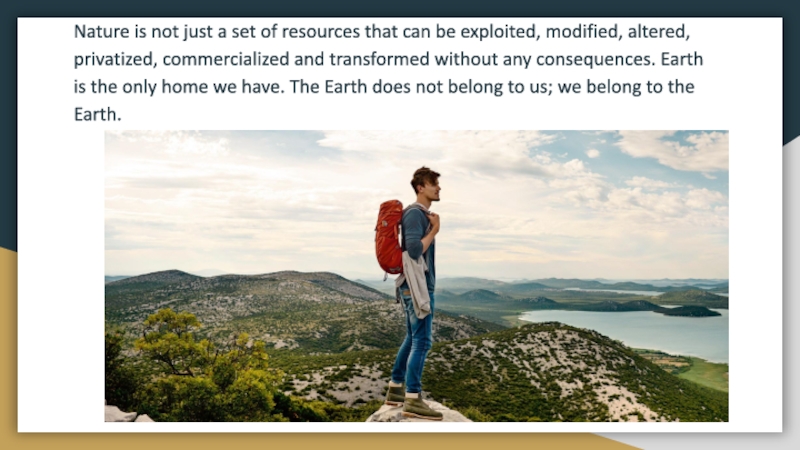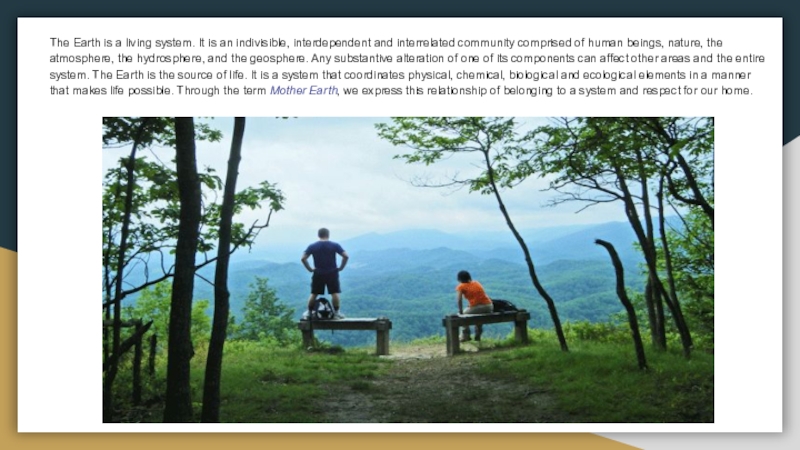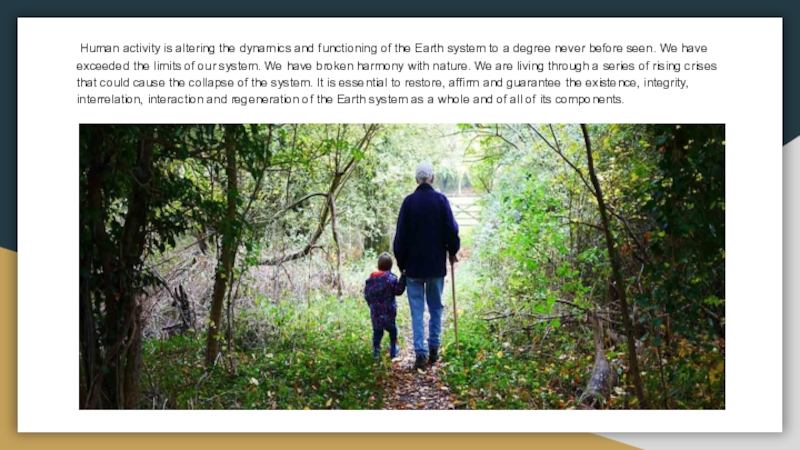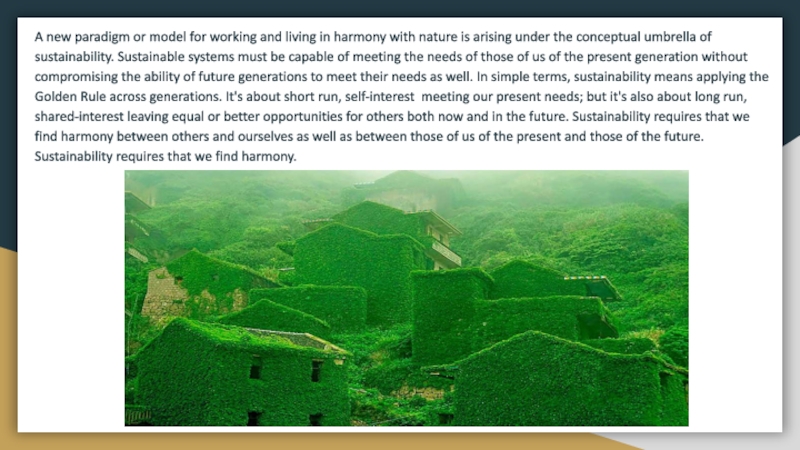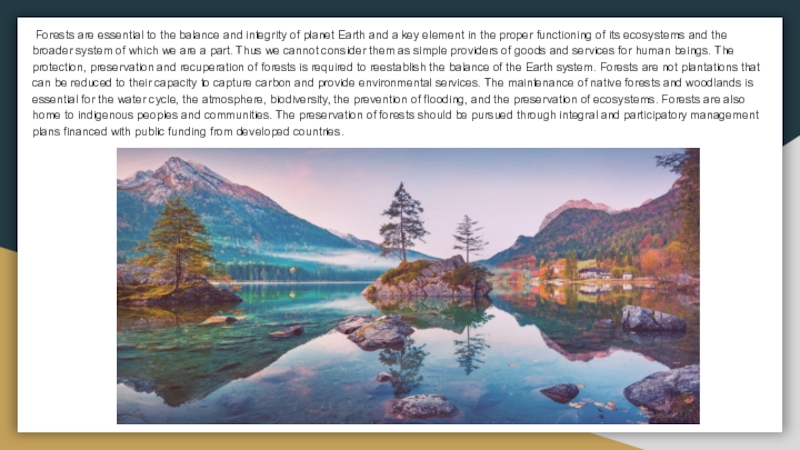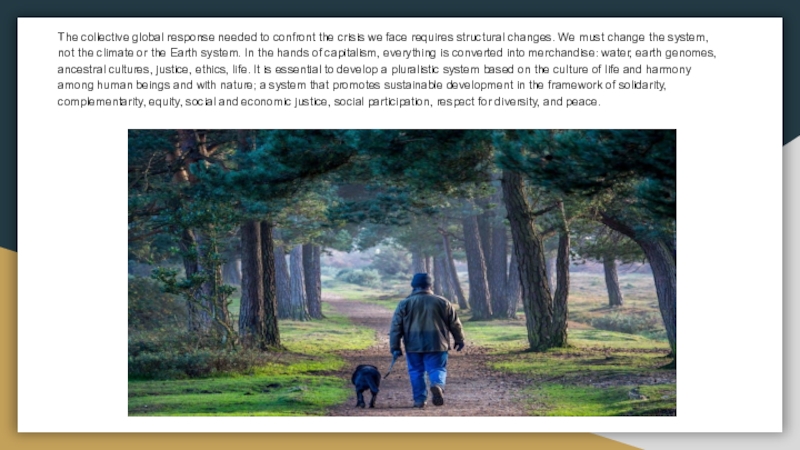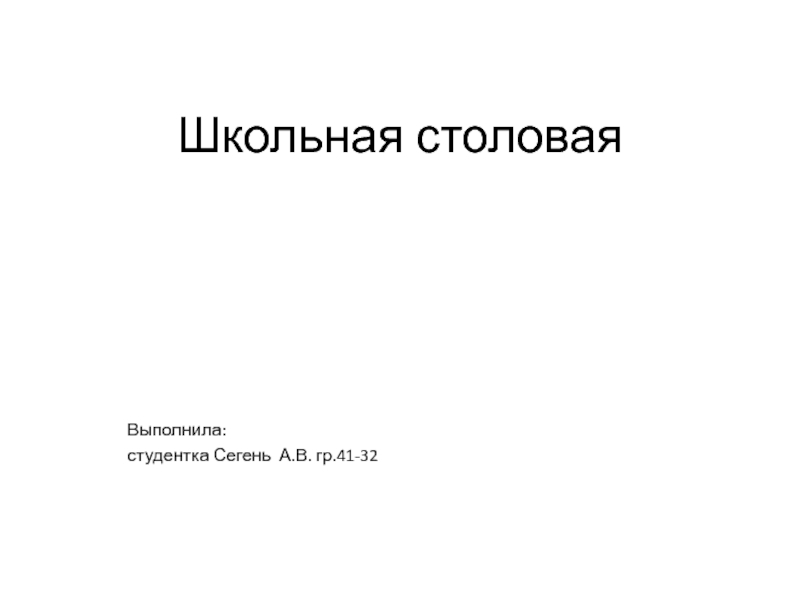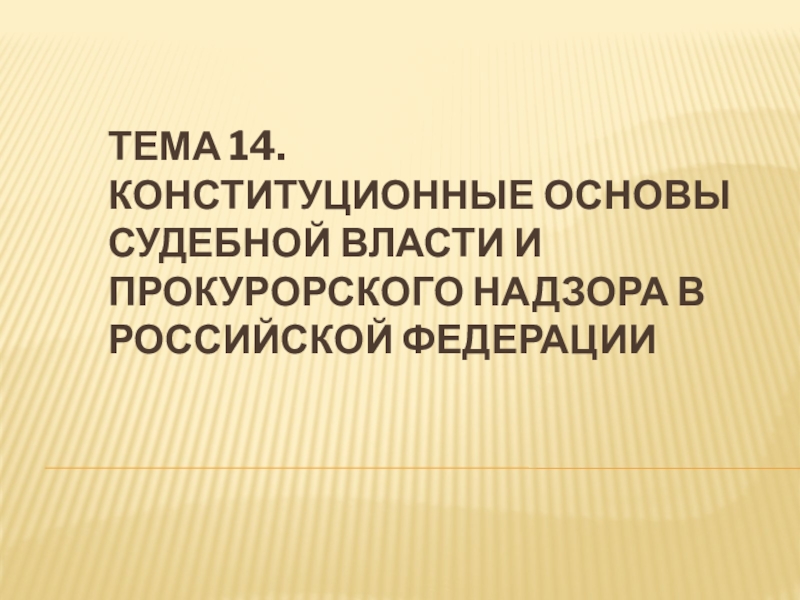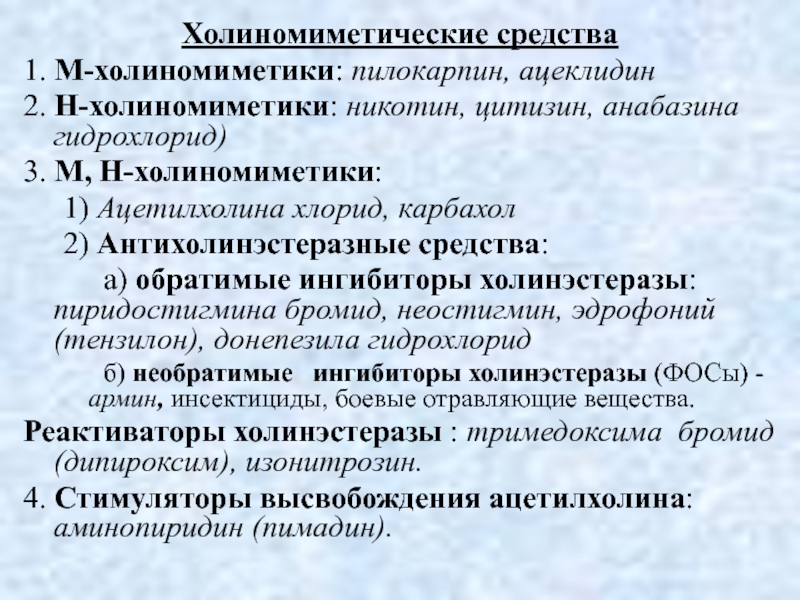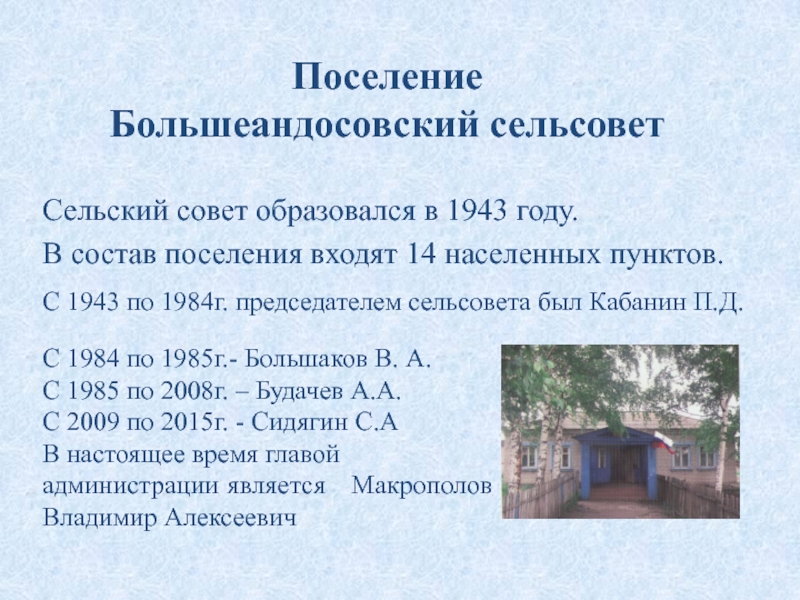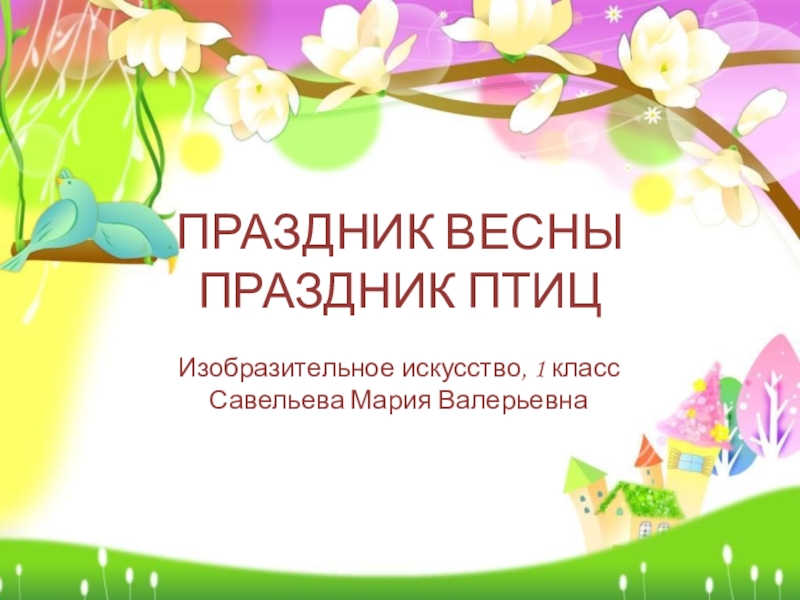Слайд 1In Harmony With Nature
Apurin Misha
Слайд 2
Much of human history has been written in terms of
an ongoing struggle of "man against nature." The forces of
nature wild beasts, floods, pestilence, and disease -- have been cast in the role of the enemy of humankind. To survive and prosper, we must conquer nature kill the wild beasts, build dams to stop flooding, find medicines to fight disease, and use chemicals to control the pests.
Слайд 3
Nature is not just a set of resources that can
be exploited, modified, altered, privatized, commercialized and transformed without any
consequences. Earth is the only home we have. The Earth does not belong to us; we belong to the Earth.
Слайд 4
The Earth is a living system. It is an indivisible,
interdependent and interrelated community comprised of human beings, nature, the
atmosphere, the hydrosphere, and the geosphere. Any substantive alteration of one of its components can affect other areas and the entire system. The Earth is the source of life. It is a system that coordinates physical, chemical, biological and ecological elements in a manner that makes life possible. Through the term Mother Earth, we express this relationship of belonging to a system and respect for our home.
Слайд 5
Human activity is altering the dynamics and functioning of
the Earth system to a degree never before seen. We
have exceeded the limits of our system. We have broken harmony with nature. We are living through a series of rising crises that could cause the collapse of the system. It is essential to restore, affirm and guarantee the existence, integrity, interrelation, interaction and regeneration of the Earth system as a whole and of all of its components.
Слайд 6
A new paradigm or model for working and living in
harmony with nature is arising under the conceptual umbrella of
sustainability. Sustainable systems must be capable of meeting the needs of those of us of the present generation without compromising the ability of future generations to meet their needs as well. In simple terms, sustainability means applying the Golden Rule across generations. It's about short run, self-interest meeting our present needs; but it's also about long run, shared-interest leaving equal or better opportunities for others both now and in the future. Sustainability requires that we find harmony between others and ourselves as well as between those of us of the present and those of the future. Sustainability requires that we find harmony.
Слайд 7
Forests are essential to the balance and integrity of
planet Earth and a key element in the proper functioning
of its ecosystems and the broader system of which we are a part. Thus we cannot consider them as simple providers of goods and services for human beings. The protection, preservation and recuperation of forests is required to reestablish the balance of the Earth system. Forests are not plantations that can be reduced to their capacity to capture carbon and provide environmental services. The maintenance of native forests and woodlands is essential for the water cycle, the atmosphere, biodiversity, the prevention of flooding, and the preservation of ecosystems. Forests are also home to indigenous peoples and communities. The preservation of forests should be pursued through integral and participatory management plans financed with public funding from developed countries.
Слайд 8
The collective global response needed to confront the crisis we
face requires structural changes. We must change the system, not
the climate or the Earth system. In the hands of capitalism, everything is converted into merchandise: water, earth genomes, ancestral cultures, justice, ethics, life. It is essential to develop a pluralistic system based on the culture of life and harmony among human beings and with nature; a system that promotes sustainable development in the framework of solidarity, complementarity, equity, social and economic justice, social participation, respect for diversity, and peace.

